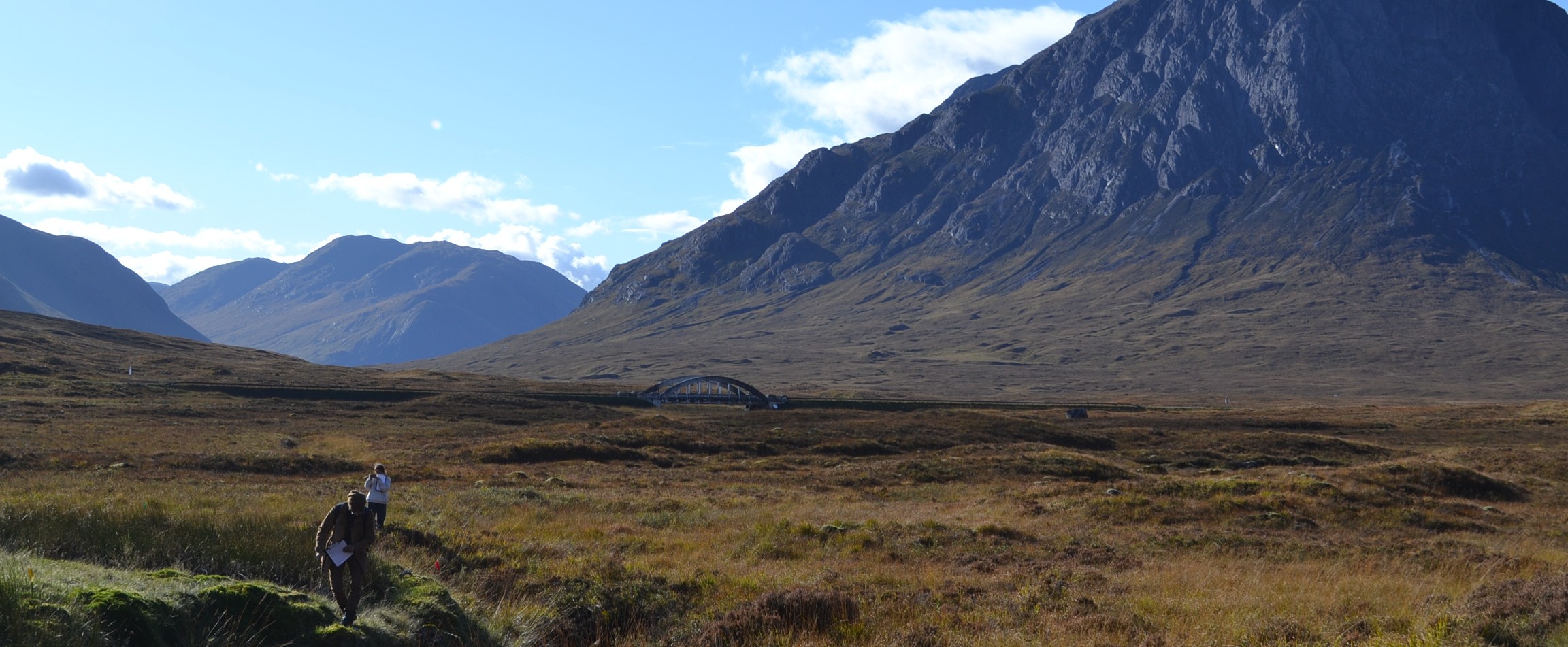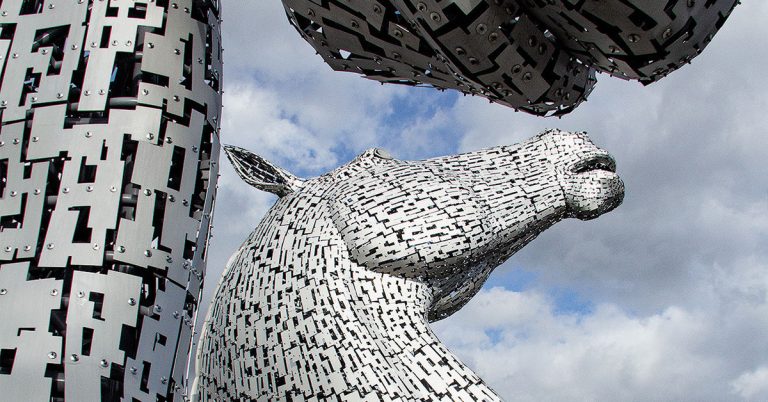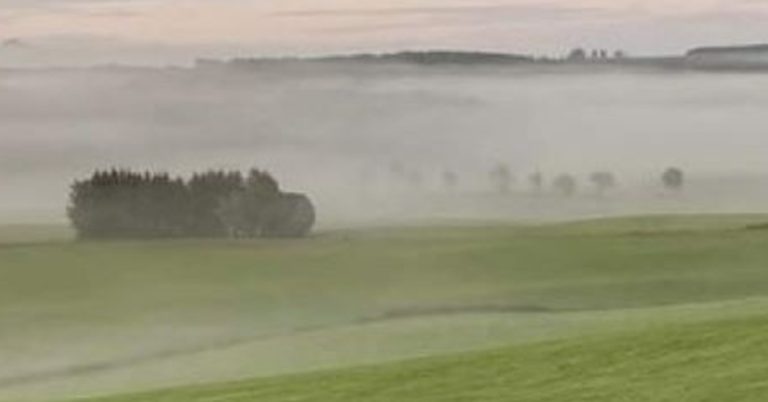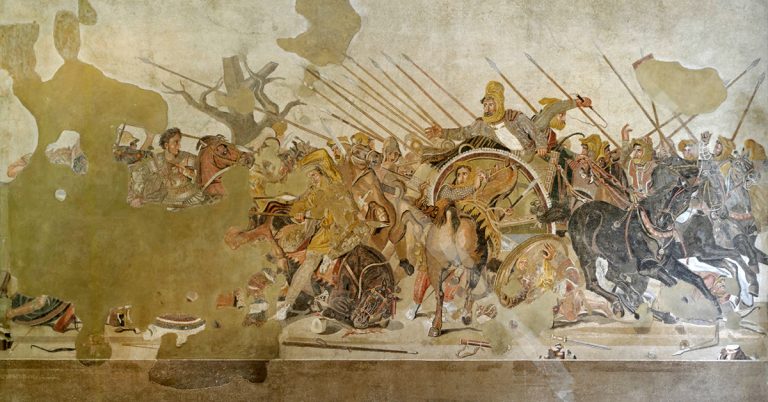
By Dr Edward Stewart
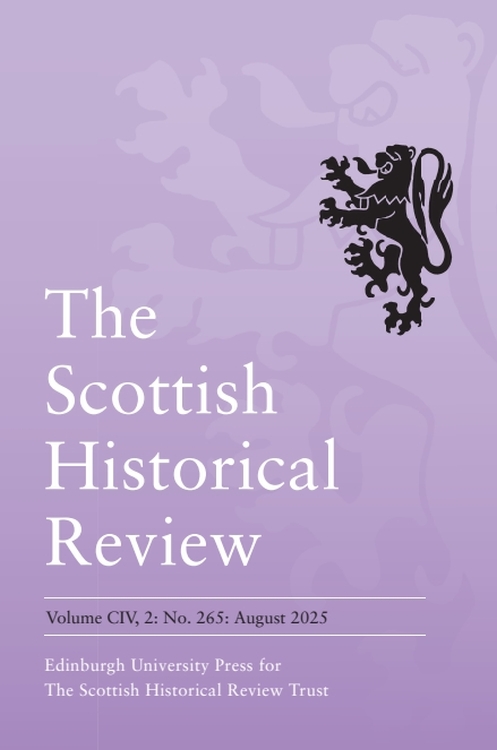
Dr Edward Stewart is the author of the article ‘Wicked Wild Wastes? Challenging Wildness through Repopulating Approaches to Archaeological Narratives in Scottish Highland Landscapes‘.
Published in The Scottish Historical Review special issue ‘Scotland’s Environmental Histories: Mapping a Way Forward’.
In my new article for The Scottish Historical Review, I explore the role of archaeological imaginings in the conception of contemporary wildness, and the development of visions for a rewilded Scotland. I argue that the perception of Scotland’s uplands as wild places has a history rooted in the marginalisation of these landscapes and their inhabitants since the enlightenment, and that contemporary acts of rewilding within this context, with their aim of creating a ‘peopleless paradise’ represent a similar act of marginalisation.
Archaeologically many of Scotland’s most ‘wild’ landscapes, the Flow Country, Rannoch Moor and Glencoe National Nature Reserve, represented busy landscapes up until the clearances of the later 18th and early 19th centuries. Networks of upland subsistence and industrial practices rendered these landscapes as anthropogenic as the concrete warren of Cumbernauld or the Meadows of Edinburgh. The slopes of Ben Lomond are studded with charcoal burning platforms, Rannoch Moor with shielings and droving routes, and Glencoe with the ruins of townships and sprawling rigs of cultivation.
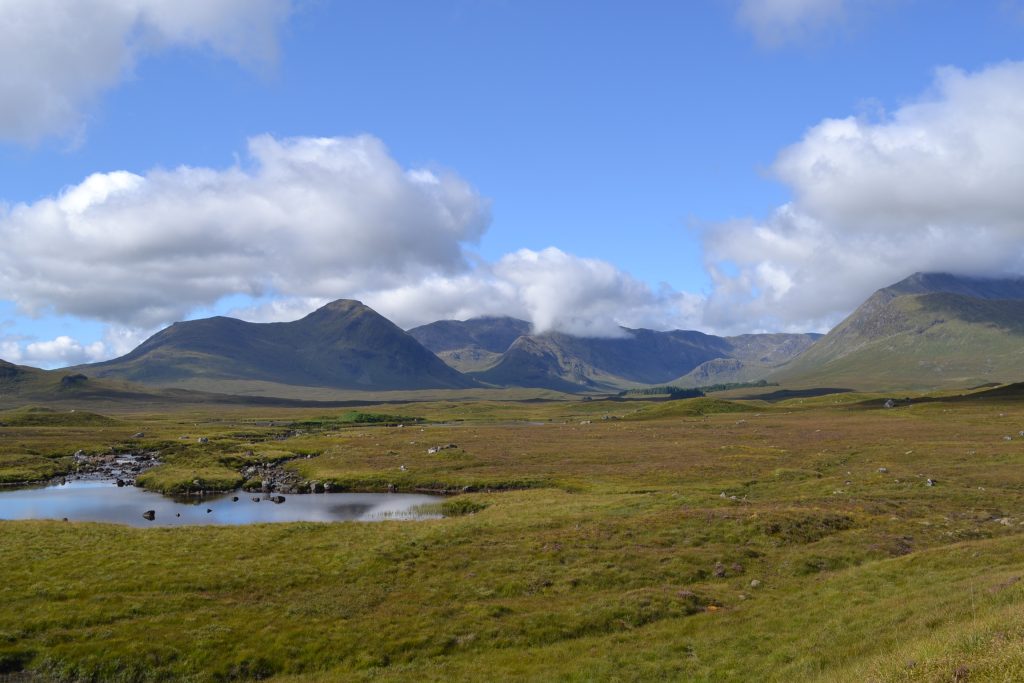
The development of notions of wildness in these landscapes developed first to other their inhabitants, who were painted as un-enlightened savages, ‘wolves with two legs’, a danger to ‘civilised communities’ and in need of pacification. Later the aesthetic of wildness, and the sublime, reproduced through the lens of the Colonial frontiers, was painted and written into the Highland landscape through the development of sporting estates and cleared landscapes to support elite leisure. In the contemporary, notions of the wild – now an empty waste in need of ecological restoration – are reproduced to imagine a return to an ecological Eden. This idealised past is produced from problematic imaginings of human and pre-human prehistory, which reduce the agency of the communities of the Mesolithic and Palaeolithic to shape and reshape their worlds. This notion of returning society to a past harmony through rewilding has been applied variously to our minds, guts, bodies, children, gardens, homes, holidays, estates and continents in a variety of publications which can be picked up in a book shop near you. This ‘cure-all to modernity’ ignores the complexity of life in this imagined past; we now know communities in the Mesolithic managed their landscapes to better support the game they hunted and species such as hazel which they relied upon.
In my article in The Scottish Historical Review I explore how an activist archaeology can deploy landscape survey as a form of counter-mapping, to challenge the notion that landscapes such as Rannoch Moor represent empty wildernesses. By ‘filling in the blanks’ with evidence of past communities’ efforts to shape their landscapes, we can present an evidence-based rebuttal to the monolith of rewilding in contemporary land politics and argue for a just response to the climate and biodiversity crises for the communities of our uplands. With each shieling, platform, farmstead, bloomery mound, rig and furrow we record, we challenge the notion of these landscapes as unproductive wildernesses prime for rewilding, and provide opportunities for productive futures for communities within these landscapes.
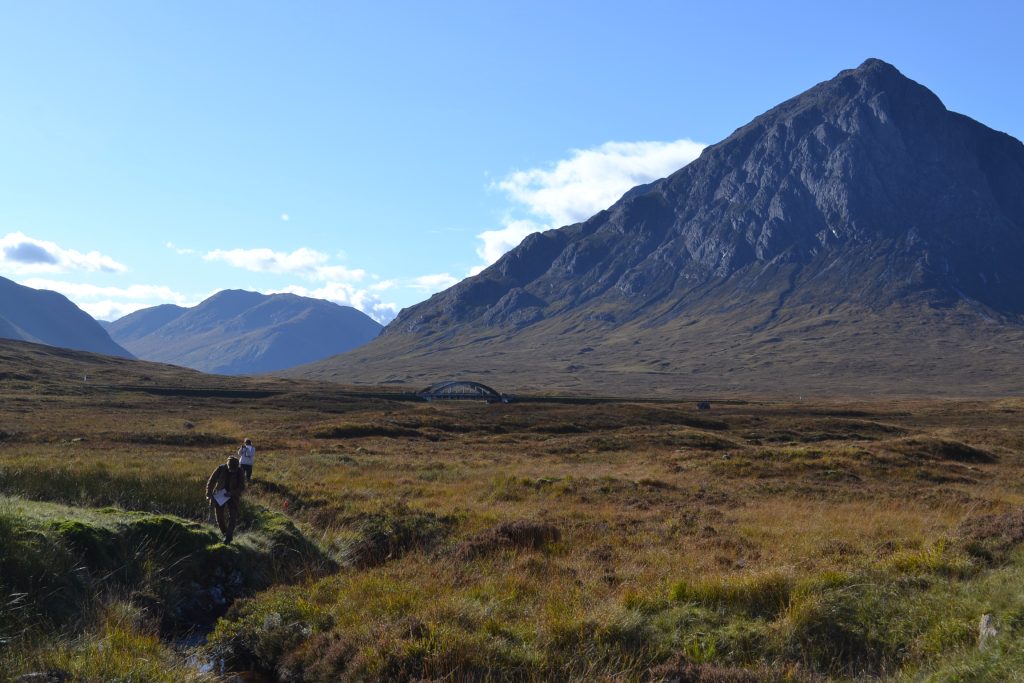
The challenge now is to communicate these notions of a busy, industrious mountain landscape to the public, and work to reshape popular perceptions. To do this, I argue, creative methods can be deployed to present these landscapes in new ways to wider audiences. Through embodied narratives and sensory approaches we can present these landscapes as alive with the lowing of cattle, crackle of flames from the bloomery mound, and laughter of the lassies at the shielings. We can draw connections from charcoal produced on a hillside in Argyll to the industrial centres of Bonawe and Carron, out to the Americas, Africa and the networks of trade which supported colonial expansion across the globe. By communicating these stories we can reshape the public’s perception of our uplands, and challenge the idea that our mountains have always been wild, and thus must be returned to that state.
This research is relevant not just in Scotland but across the world where traditionally marginalised landscapes (from Northern Spain to Southern Italy, the Balkan mountains to Polish Marshes, Northern Scandinavia to Highland Scotland and beyond) face further marginalisation through policy responding to the contemporary climate and biodiversity crises. Western urban centres have benefited from resource exploitation both historically and in the present. In order to alleviate their guilt and consumption, historically marginalised landscapes (depopulated by clearance and stagnated economically by lack of investment) face the brunt of our drives to offset carbon, generate green energy, and provide space for nature. There is a space for the archaeologist and historian in these debates, to highlight the processes which have led to these landscapes’ and their communities’ marginalisation, and offer alternative futures for these landscapes.
Read the full article, ‘Wicked Wild Wastes? Challenging Wildness through Repopulating Approaches to Archaeological Narratives in Scottish Highland Landscapes’ in The Scottish Historical Review
About the Author
Dr Edward Stewart is the Clyde Valley Archaeological Research Framework (CVARF) Engagement Officer at Archaeology Scotland, and an affiliate researcher at the University of Glasgow. He co-directs excavations at the University of Glasgow’s ‘Landscapes of Glencoe and Rannoch Moor Project’, and Glencoe field school, in collaboration of the National Trust for Scotland and has conducted surveys in Glencoe, Rannoch Moor, Canna and Sanday, Cochno and Mar Lodge of shielings and other upland post-medieval features.
Edward is interested in the use of archaeology as a form of counter-mapping to challenge contemporary notions of upland marginality and emptiness.
Explore related posts on the EUP Blog
Investigating Scotland’s land issues, past, present and future
From the Appalachian to the Highlands and the Pyrenees, energy futures are all about permitting
‘The Cradle of Scottish Industry’?: exploring Culross’s unique legacy of industrial advancement
Fr John Morrison: defender of an island’s cultural heritage and faith



